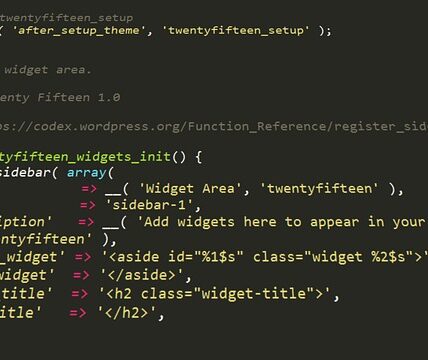Do you struggle to find the right words for your React.js components? Are you unsure of what a good commenting style looks like? How can you ensure that your code is effectively documented?
Well-documented code is a major step in the software development process and it’s important to get it right. Comments help to explain the purpose and function of code, making it easier for developers to understand and maintain the code. Good commenting also improves the structure and organization of the code, making it more readable. Unfortunately, many developers don’t pay much attention to commenting or have different styles which can make reading the code more difficult and confusion. This plays an even bigger role with React’s component-based approach.
In this article, you will learn the importance of good commenting in React and discover best practices for writing effective comments to produce well-documented and maintainable code. We will explore the different types of comments in React and discuss how to effectively use them within a component. We will also look at how to use comments to ensure easier debugging and to make source code more readable. Finally, you will learn some helpful tips for creating an efficient commenting style.
By the end of this article you will have a better understanding of the importance of good commenting and its role in the React components-based programming.You will also have a clearer idea of the best practices of how to comment in React components to make sure that your code is easy to read and maintain.
Definitions
When coding with React.js, developers use comments to provide additional context to their components. Good React.js commenting style means that comments should be meaningful, easy to read, and as concise as possible. The purpose of a good commenting style is to both help new and experienced developers understand the purpose and operation of code more clearly.
Clear Descriptions: Comments in React.js should contain a clear, concise description that explains why the code exists in the first place. This helps to quickly understand the purpose of a certain component or process.
Contextualization: Comments should provide additional information about the context of the code, such as what other components a particular component interacts with or what data is being used to render a particular element.
Relevance: Comments should be relevant to the code they are describing. If a comment is not relevant to the code, it should be removed from the codebase.
Formatting: Comments should be formatted in an easy-to-read way. This means that comments should be indented properly, use whitespace to increase readability, and should end with a period.
Consistency: The same commenting style should be used throughout the codebase. This helps developers easily identify important components when working on a project, and assists in understanding the flow of the code.
By following these best practices when adding comments to React.js components, developers will better understand the purpose and functionality of the code, as well as ensure that new developers and other contributors to the codebase have a better understanding of how the code works.
Introduction of React.js
An effective commenting style for React.js components should provide an overview of the component, explain any logic and algorithms that are used within the component, and explain the structure of the component, as well as any specific approaches taken for the implementation. Additionally, providing a brief description of any state or props that are used within the component, and any assumptions that were made during the development, can be useful for informing other developers of the purpose and meaning of the component. Finally, documenting anything that is counterintuitive or tricky to understand with comments can help to make the component easier to maintain and debug.
Features of Effective Commenting
Commenting a React.js component requires the same approach as for any other coding. Commenting should be clear, concise, and avoid unnecessary detail, as this can overload the user as they try to understand your code. Commenting should explain the code for someone who does not yet understand it, with the aim of documenting the code and making it easier to read and debug.
When commenting React.js components, it is important to explain the purpose of the component and why certain lines of code exist. Avoid describing the way that the code works and instead explain the intended outcome. This will help other developers to more quickly understand the code and make informed decisions about further development.
When components are written with multiple logic points, it is important to comment with the code each step of the way. This will explain the purpose of each logic point, as well as documenting the progression of the component. This detail can help developers to locate and repair areas of the code which may have become complex and confusing.
When working with React hooks, it can be beneficial to provide a brief comment for each hook within the component. This will serve as a reminder or explainer of how each hook functions within the code. This makes it easier for developers to identify which hook is responsible for which part of the component.
Overall, when writing comments for a React.js component, it is important to make them clear, concise, and to the point. Explanations should focus on the purpose of the code, not on the how, and comments for each logic point should describe the intended course of the component. With consistent and meaningful commenting, developers can more quickly understand and debug code, increasing efficiencies and reducing potential errors.
Guidelines for Writing Comments in React.js Components
Comments are an important part of software development and can be used to help others understand a codebase quickly and identify functionality quickly and efficiently. React.js components are no different and following some guidelines for writing comments can help make your codebase easier to understand and more efficient for others to work with.
The most important thing to keep in mind when writing comments within a React.js component is brevity. Unlike a blog post or essay, comments should be concise and to the point. A comment should generally explain what a line of code is doing and why, not how it is doing it. If an inline comment is necessary, it should be kept as short as possible and should not exceed 1-2 sentences. Keeping comments short helps maintain readability and allows the code to stand out.
In addition to brevity, comments should be descriptive and explain the intention of the component rather than the individual lines of code. It is not necessary to detail every line of code within the comment but rather focus on the overall functionality of the component. It is also important to ensure the comments remain up to date and accurate. If the functionality of a component changes, the comment should be updated accordingly to ensure accuracy.
Finally, when writing comments in React.js components, it is important to use descriptive headlines and language. This will help others to quickly understand what a component is intended to do and how it should be used. It is also important to ensure that the language used is gender neutral and non-discriminatory to ensure everyone feels included and can easily read and understand the code.
By following these guidelines, writing clear and concise comments in React.js component is achievable and valuable for everyone. Proper commenting will help maintain a well organized and easily comprehendible codebase which can be shared and tweaked with ease. It is important for everyone, regardless of whether they are a software engineer or a hobbyist, to understand and utilize good commenting practices.
Conclusion
Commenting styles are an important part of creating React.js components. They provide clarity and structure that can help developers better understand the code. However, with the ever-evolving nature of development, what makes for a good commenting style may not always stay the same. What might be considered good one day might be outdated the next. So how can React.js developers keep up and ensure their components are properly commented?
The only way to ensure that the commenting style remains top-notch and up-to-date is to stay in the loop with new trends and latest techniques. At the same time having a blog that provides frequent updates can help ensure developers also stay informed and are using the best practices each time. By continuing to follow our blog, developers will always be the first to know when a new commenting style has been released, and can make sure their codes are always in great shape.
Frequently Asked Questions (FAQ)
Q: What is a good commenting style for React.js components?
A: A good commenting style for React.js components should be legible, clear, and concise, providing meaningful information surrounding the code. It should also take advantage of modern development techniques and trends, so that your code remains up-to-date.
Q: What are some best practices when it comes to commenting on React.js components?
A: Some best practices for commenting on React.js components are to use descriptive and specific comments that explain the code, indicate key classes and methods, and help explain the purpose of the component. Additionally, avoid unnecessary comments and only comment code that is not self-evident.
Q: How often should I update my commenting style?
A: In order to ensure that your commenting style remains up-to-date and effective, you should check for updates and changes to React.js frequently. Additionally, keeping an eye on our blog for new releases will help you stay on top of the latest techniques and trends.
Q: What language should be used to comment in React.js components?
A: To ensure that your React.js components are legible and understandable, you should comment in English. This will help ensure that developers from all over the world can easily understand the code.
Q: What happens if my commenting style becomes outdated?
A: If your commenting style becomes outdated, you may experience difficulty understanding your code in the future. Staying informed on the latest React.js trends and techniques will help ensure that your commenting style remains up-to-date and effective.




